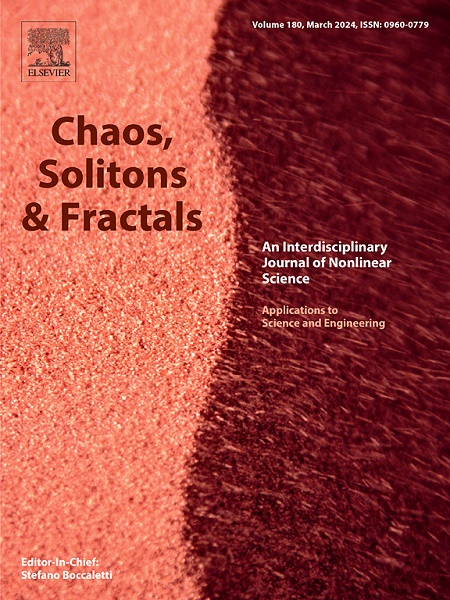计算加工表面三维分形维数的动态锥体体积校正方法
IF 5.6
1区 数学
Q1 MATHEMATICS, INTERDISCIPLINARY APPLICATIONS
引用次数: 0
摘要
针对现有三维曲面分形维数计算方法在精度和适应性方面的局限性,提出了一种基于动态金字塔体积校正法(Dynamic Pyramidal Volume Correction Method, DPVC)的三维曲面分形维数计算方法。该方法通过引入体积校正系数来建立耦合体积校正模型,该系数既考虑了凹凸不平的位置偏移,也考虑了它们与衬底的重叠,从而能够定量表征表面复杂性。以修正后的三维曲面体积为测度,网格单元长度为尺度,构建幂律关系。然后直接从尺度区间内对数-对数曲线的线性拟合斜率得到分形维数。为了验证所提出的方法,使用weerstras - mandelbrot (W-M)函数生成各向同性和各向异性分形曲面,并使用DPVC进行分析。结果进一步与微分盒计数法(DBC)、变分法(VM)和三角棱柱表面积法(TPSA)的结果进行了比较。并引入四权重产品级联模型进行进一步验证,验证了DPVC在多重分形谱计算中的适用性。此外,利用白光干涉法测量了实际加工表面,并对采集的数据进行了DPVC处理,验证了其在实际表面轮廓分析中的有效性。结果表明,DPVC方法的计算精度最高,具有较好的适应性,能有效地捕捉三维表面的分形特征。本文章由计算机程序翻译,如有差异,请以英文原文为准。
Dynamic pyramidal volume correction method for calculating the three-dimensional fractal dimension of machined surfaces
To address the limitations of existing methods for calculating the fractal dimension of 3D surfaces in terms of accuracy and adaptability, this paper proposes a novel approach based on the Dynamic Pyramidal Volume Correction Method (DPVC). The method establishes a coupled volume correction model by introducing a volume correction coefficient that accounts for both the positional offset of asperities and their overlap with the substrate, enabling quantitative characterization of surface complexity. Using the corrected 3D surface volume as the measure and the grid unit length as the scale, a power-law relationship is constructed. The fractal dimension is then directly obtained from the slope of the linear fitting of the log–log curve within the scaling interval. To validate the proposed method, both isotropic and anisotropic fractal surfaces were generated using the Weierstrass–Mandelbrot (W–M) function and analyzed using DPVC. The results were further compared with those obtained from the Differential Box-Counting (DBC), Variational Method (VM), and Triangular Prism Surface Area (TPSA) methods. Additionally, the four-weight product cascade model was introduced for further validation, confirming the applicability of DPVC in multifractal spectrum computation. Furthermore, real machined surfaces are measured using white light interferometry, and DPVC is applied to the acquired data, demonstrating its effectiveness in practical surface profile analysis. The results show that DPVC achieves the highest computational accuracy and superior adaptability among the evaluated methods, effectively capturing the fractal characteristics of 3D surfaces.
求助全文
通过发布文献求助,成功后即可免费获取论文全文。
去求助
来源期刊

Chaos Solitons & Fractals
物理-数学跨学科应用
CiteScore
13.20
自引率
10.30%
发文量
1087
审稿时长
9 months
期刊介绍:
Chaos, Solitons & Fractals strives to establish itself as a premier journal in the interdisciplinary realm of Nonlinear Science, Non-equilibrium, and Complex Phenomena. It welcomes submissions covering a broad spectrum of topics within this field, including dynamics, non-equilibrium processes in physics, chemistry, and geophysics, complex matter and networks, mathematical models, computational biology, applications to quantum and mesoscopic phenomena, fluctuations and random processes, self-organization, and social phenomena.
 求助内容:
求助内容: 应助结果提醒方式:
应助结果提醒方式:


